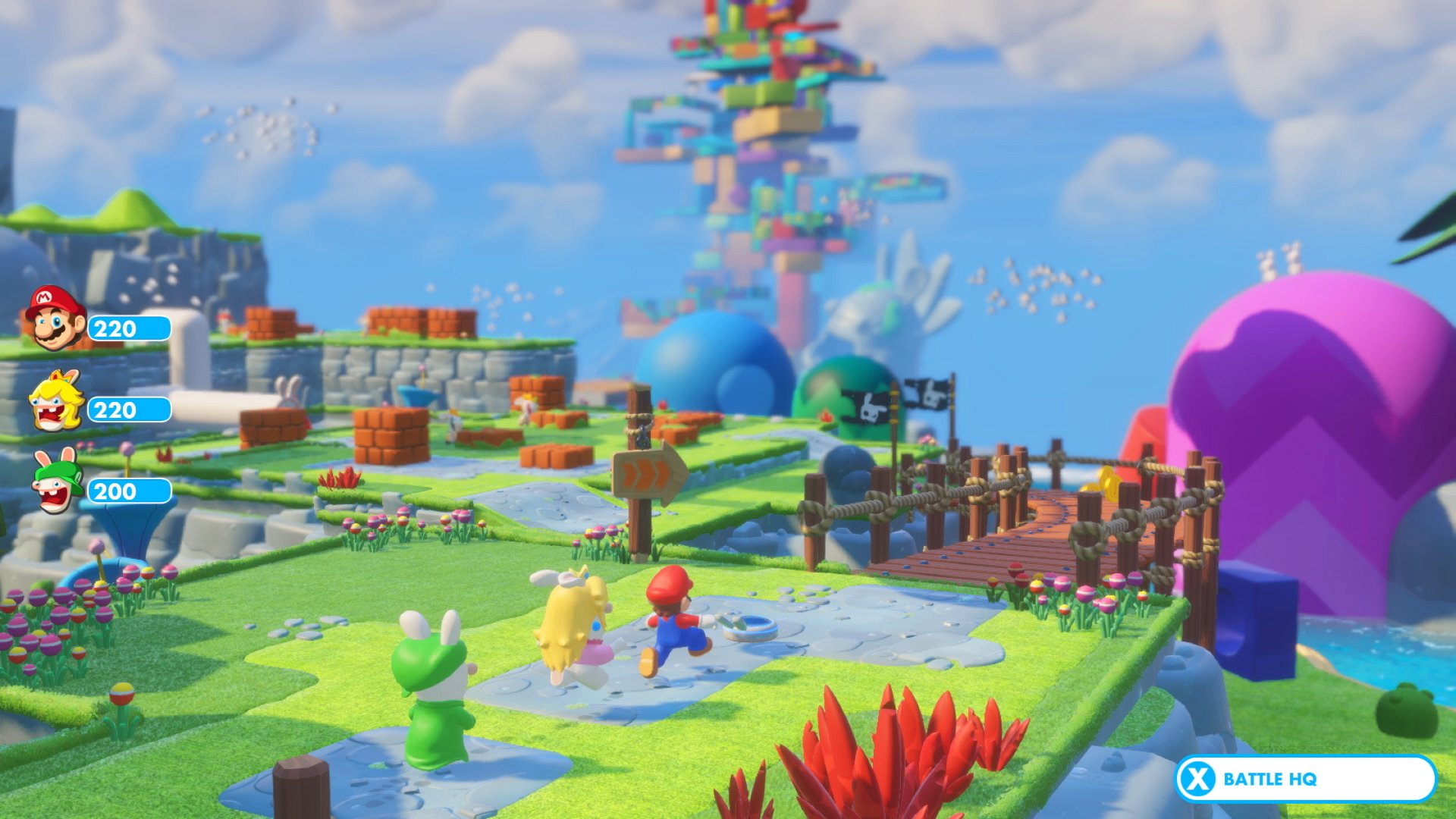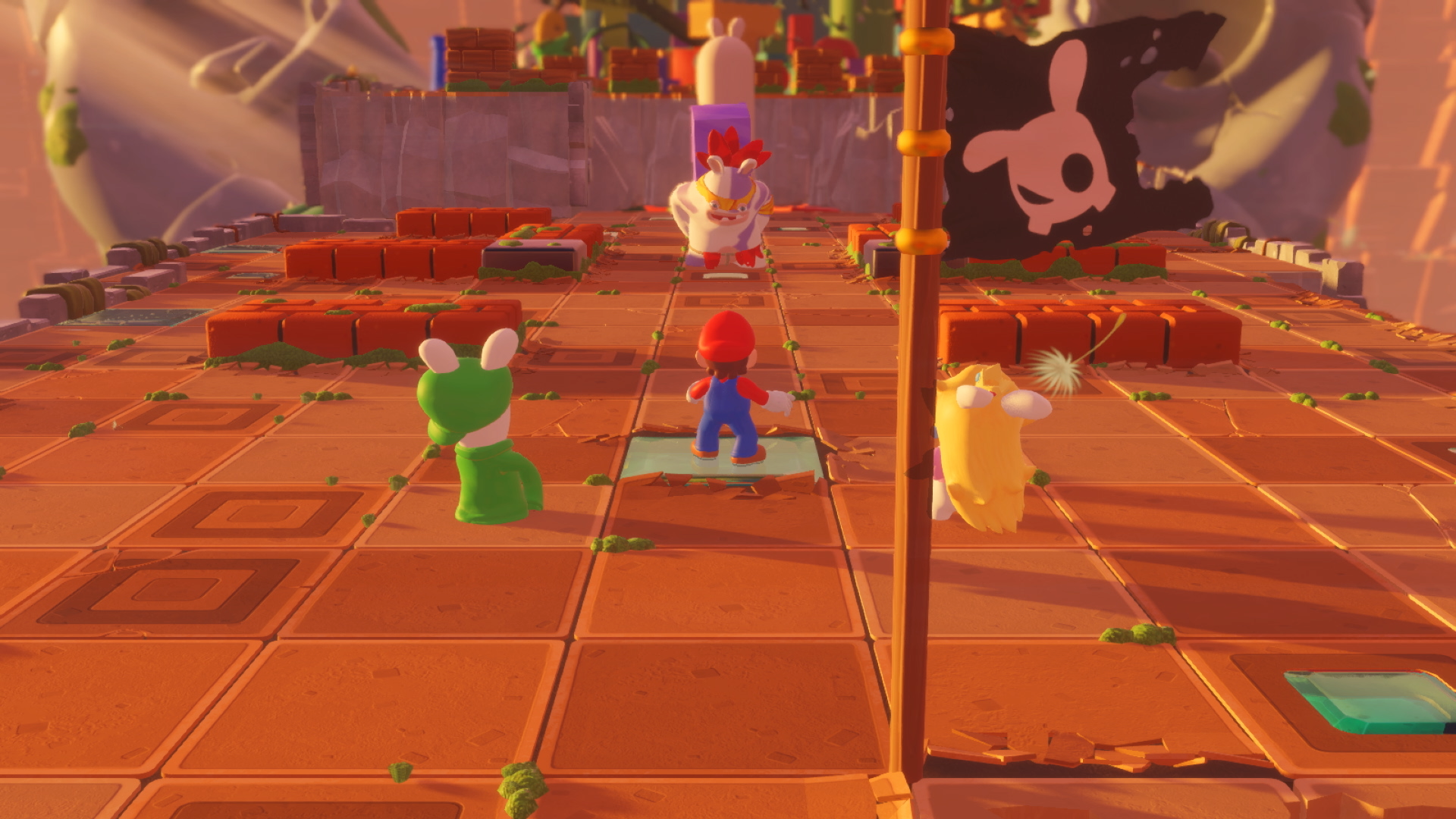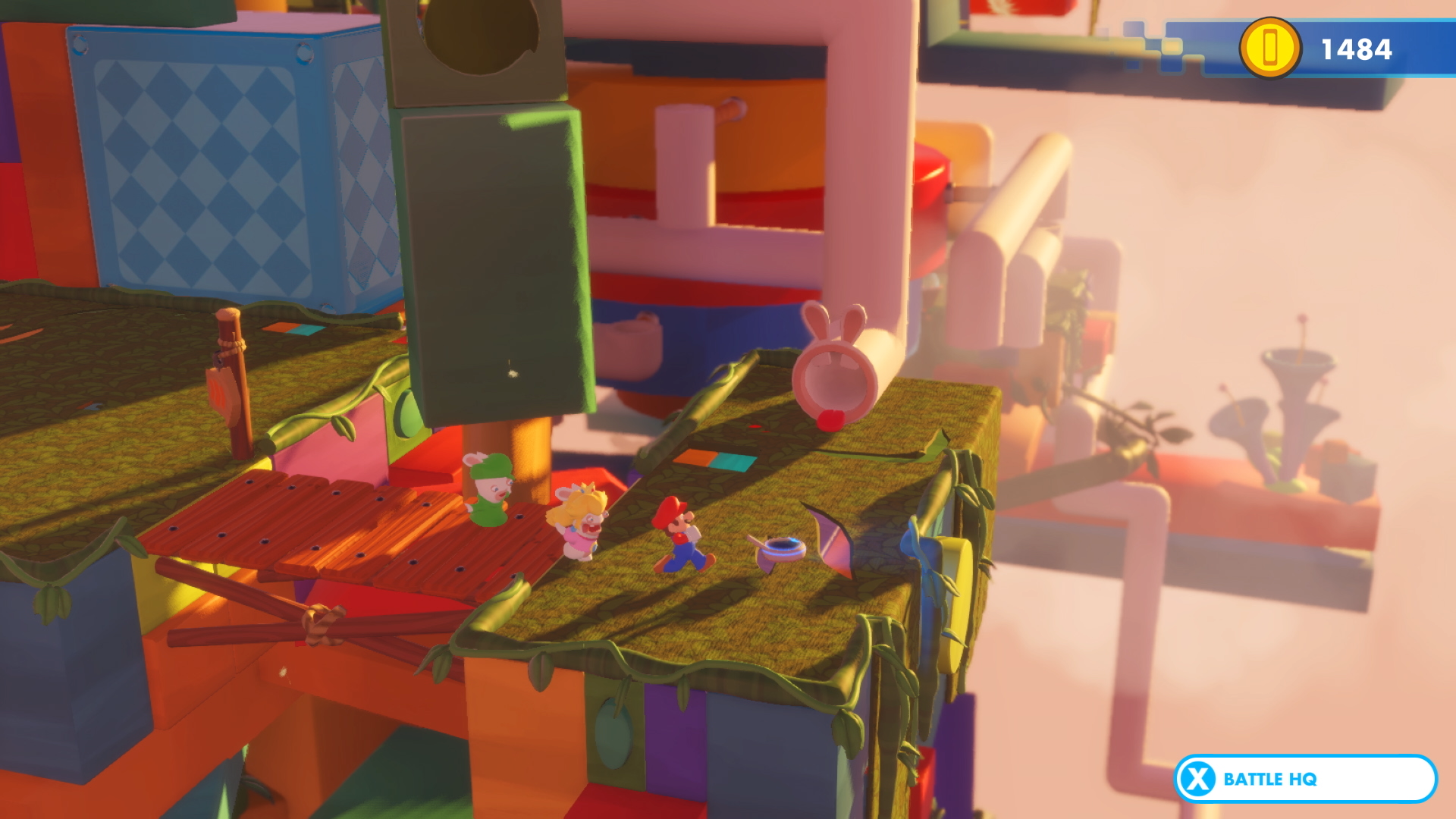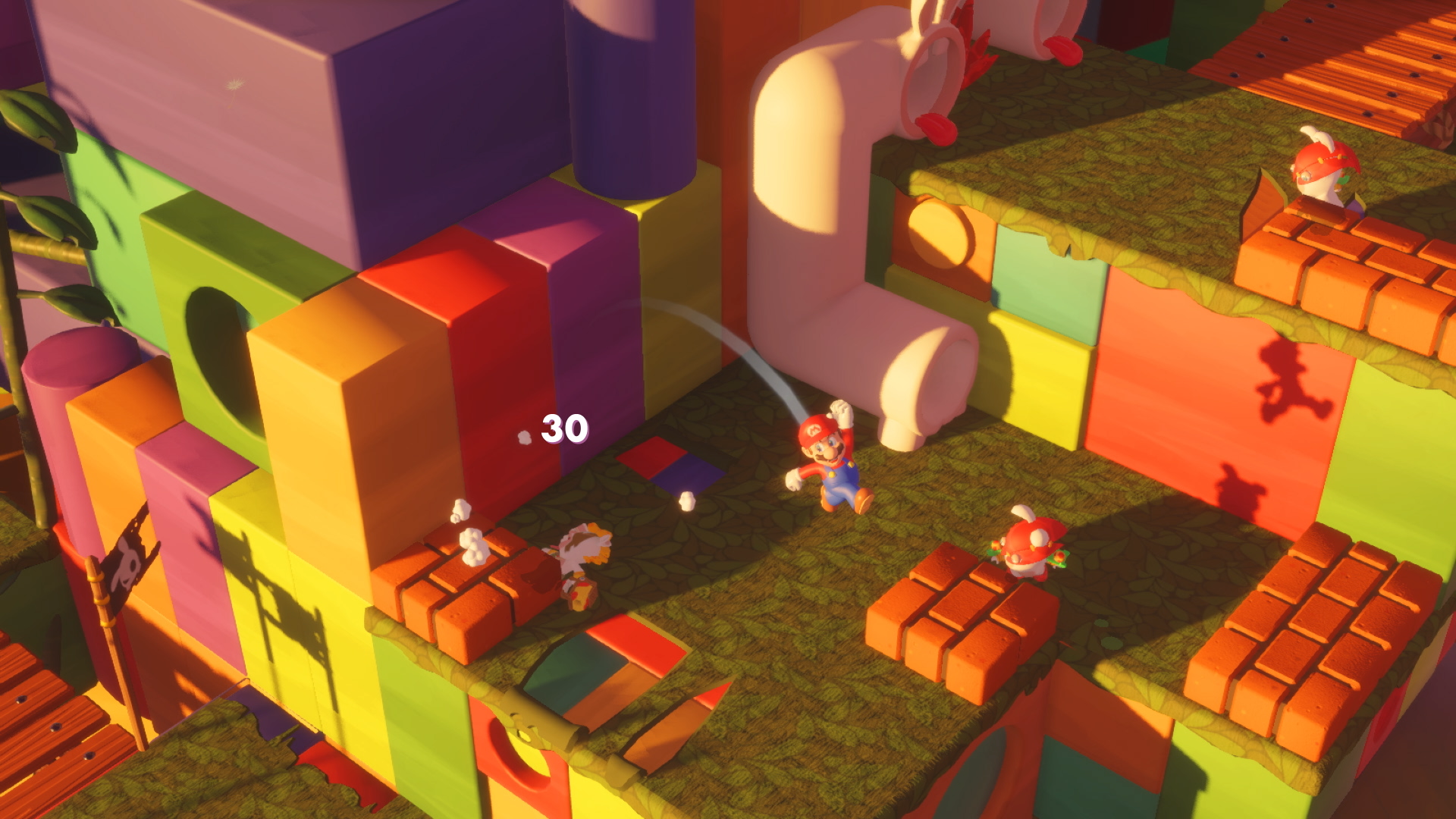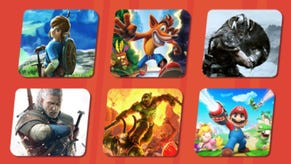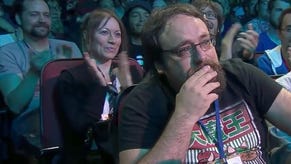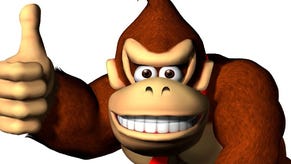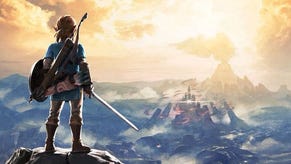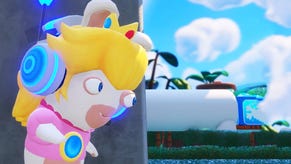Mario + Rabbids is Switch's unlikeliest tech showcase
The Division's Snowdrop engine transitions beautifully to Nintendo's console hybrid.
Here at Digital Foundry, we're a little late to the party with Mario + Rabbids Kingdom Battle, but we felt compelled to weigh in on this exceptional title. In addition to being a beautiful, brilliantly designed strategy game, it's also a technological showcase for Nintendo's handheld, designed using Massive Entertainment's Snowdrop Engine - the rendering foundation for Tom Clancy's The Division. It's surely one of gaming's most unlikely engine transitions but according to Ubisoft, a core tenet of its creation hinges on the concept of working smarter - doing things better, not bigger.
The combination of Switch and Snowdrop proves to be a highly potent pairing, bolstered by Ubisoft's exceptional artistic direction and a strong gameplay concept. Based on what we've seen of the technology to date, Massive's engine demonstrates a level of flexibility similar to Unreal Engine or Unity, clearly capable of powering a wide range of game types. In addition to Mario + Rabbids, the upcoming South Park title is also based on the same core technology.
With all of these titles in mind, it's clear that the engine has a great deal of scalability: The Division remains one of the most visually striking games released this generation, showcasing what Snowdrop can do when aiming for a more realistic aesthetic. It's an impressive showcase, capable of stressing even the most powerful PC hardware when pushed to the limit, but Mario + Rabbids is something entirely different. It's a game that seeks to capture the look of a pre-rendered cartoon, the perfect match for a Mario title.
The effectiveness of Ubisoft's work here in delivering its vision is such that we'd go so far as to say that no other Western studio has managed to so perfectly capture the visual essence of the Mario series. From the soft focus, tilt-shifted isometric viewpoint to the lovely animation work, it really is a beautiful game, and ranks as one of the best-looking Switch titles money can buy.
However, that's not to say there haven't been compromises. When playing the game docked, Mario + Rabbids runs at a resolution of 1600x900, while the handheld mode instead drops to just 1066x600. Thankfully, the resolution deficit is made up by the inclusion of an accomplished anti-aliasing solution - an area where Nintendo itself typically falls flat (Mario Kart 8 Deluxe, for example, is extremely sharp but the lack of anti-aliasing results in noticeable, shimmering jagged edges). Mario + Rabbids is a softer game but the edges are cleaner and smoother overall, with the use of depth of field only further improving perceptual image quality. This is doubly true when playing in portable mode where it's more difficult to discern whether it's running at 720p during normal gameplay - a factor of the art style, the post-processing and the smaller nature of the screen itself.
Gameplay-wise, most of the experience is viewed from an overhead, isometric perspective, with the game divided up into exploration and turn-based strategy segments. During exploration, a soft-focus depth of field effect works in tandem with a freely rotatable camera system to give the impression of peering into a tiny Mario-themed diorama. In battle, the camera switches to a four-point system that allows you to quickly rotate 90 degrees at a time.
The first world is filled with lush terrain with crystalline lakes dotting the landscape as cloud shadows slowly roll across the game world. Look closely and you'll find plenty of detail on a smaller scale - a lovely grass shader is used throughout this area giving depth to what would otherwise be a flat surface. This is complemented by high resolution textures that hold up even at close proximity and a gorgeous water shader that feels like a proper next-generation take on Super Mario Sunshine's beautiful ocean. Later in the stage, you're presented with an objective on top of a large, teetering structure formed from random blocks. The sense of scale as you fight your way to the top is impressive indeed. Beyond that you'll find the expected desert world and more. It all looks great and stays true to Mario's design while offering a fresh take on the concept.
It's fascinating to examine how the game world was constructed - when we use pixel counting to determine a resolution, for instance, it usually involves locating a flat edge for testing. In Mario and Rabbids that proved remarkably difficult - the artists clearly poured a lot of effort into hiding every sharp edge in the game, helping to give the impression of a smooth, rounded world.
Taken together, Mario + Rabbids makes a great case for the Snowdrop engine itself while highlighting the talents of the artists that toiled away on this game. It really is a beautiful looking game - and by and large, the performance is a match. It's true that 60 frames per second would have been great to see considering how much lateral camera movement is present, but at least the presentation is generally stable. Yes, we're looking at 30 frames per second here. Frame-pacing is generally correct and the target frame-rate is met most of the time. That said, it's not perfect. In some instances - particularly when the camera zooms in on the action - noticeable slowdown can rear its head. This isn't an action game, so it doesn't impact on the actual gameplay, but it can slightly detract from the presentation.
The other aspect of performance worthy of praise are the loading times - they're fast and infrequent. This is an important element, actually - each of the worlds in the game is huge, allowing players to seamlessly move from exploration to battle without ever cutting to a separate loading screen. When loading does pop-up, however, it's a brief interlude with a cute animation, and there's no tangible sense that the flow of the gameplay is being disrupted.
As a whole then, it's also great to see this game come together so well after an extended development period. The original concept was first pitched to Shigeru Miyamoto back in 2014 and he was enamored with the idea of building a new style of Mario game that Nintendo itself really had never attempted. Considering the time frame, we have to wonder if it was first in development for the Wii U and, if so, what that version might have looked like. Perhaps we'll never know, but it's interesting to consider.
For now, though, this Switch release is genuinely excellent and well worth adding to your library. It's a beautifully crafted title with stable performance, massive maps and quick loading. It's also a perfect fit for on-the-go play. This one nearly slipped under our radar but since starting on the game this week, it's been tough to put down. Ubisoft has absolutely nailed it. Then there is the potential with Snowdrop itself. The publisher's many studios have developed many internal engines over the last couple of generations, but Snowdrop seems like it could stand out and persist as one of its strongest. Both Mario + Rabbids and The Division offer smooth, stable performance and high-quality visuals - vastly different in terms of scale and target hardware, yet both delivering the goods. Suffice to say, we're really eager to see how this technology continues to evolve in the future.




